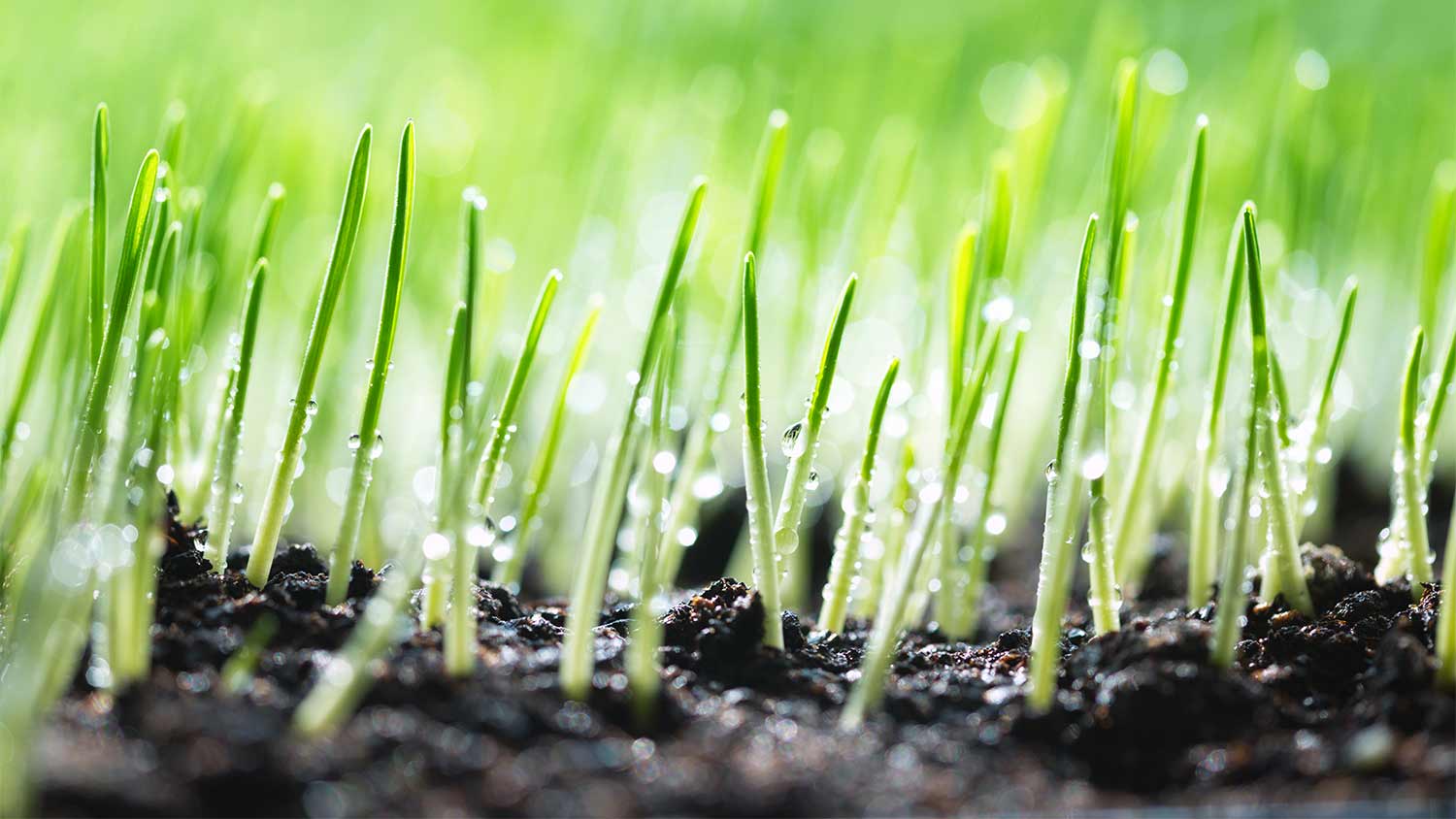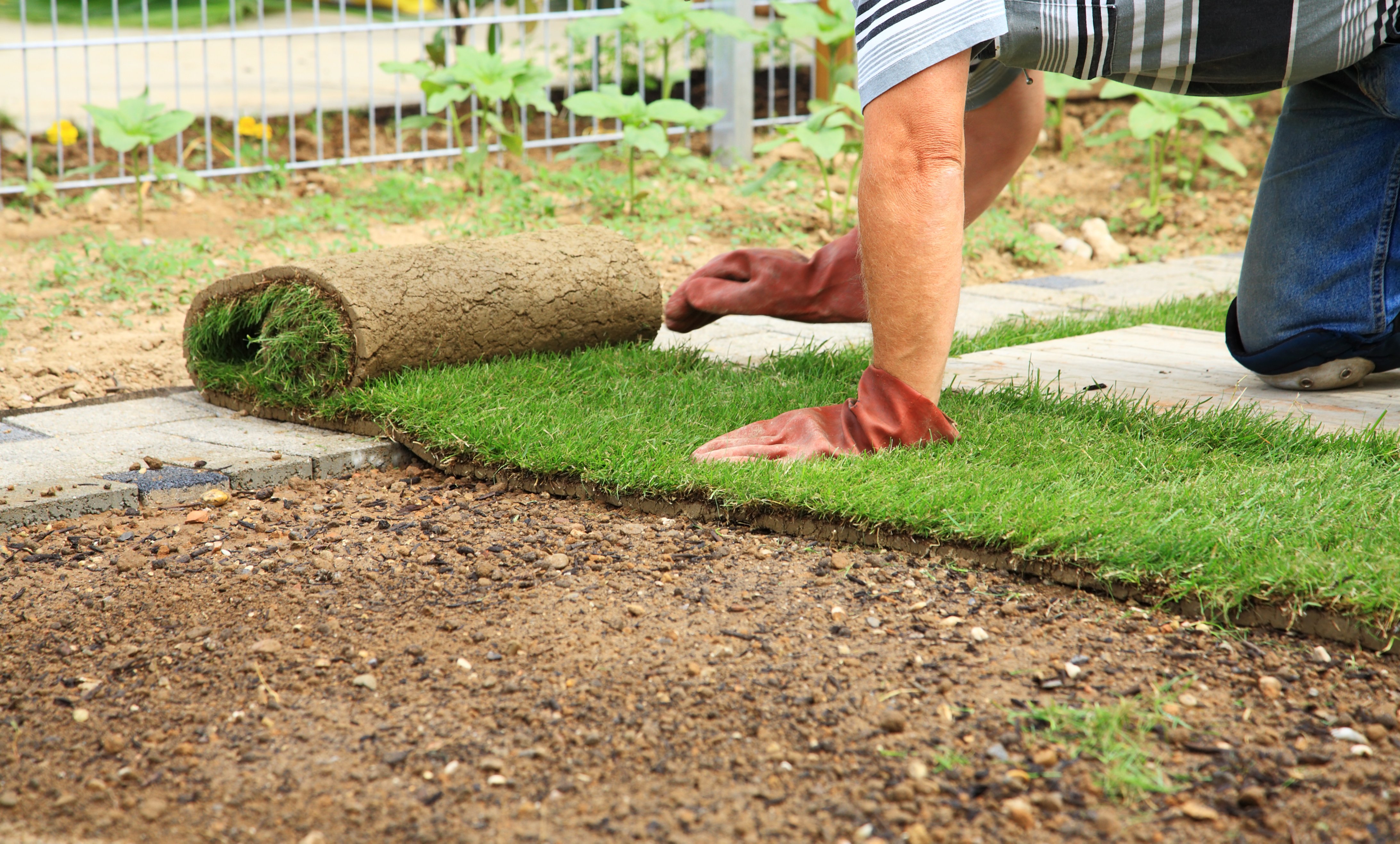
The cost to reseed a lawn can vary depending on the size of your yard and the condition of the soil. We’ll help you figure out the true cost of reseeding or overseeding your lawn, along with whether or not you should hire a professional.
Never doubt your sprout game again


Consistent moisture, sunshine, oxygen, and great soil are the key components of successful grass seed germination.
Consider your seeds germinated once they have sprouted three to four inches.
While grass seeds need lots of water, don’t overwater, which can kill them.
Whether you’re sowing fresh grass seed on your new lawn or filling in brown patches, you’re likely wondering how to tell if your grass seed is germinating correctly.
Growing grass from seed requires the seeds to go through the process of germination, needing optimal conditions such as excellent weather, sunshine, and plenty of water.
Learn how to give your grass seed the conditions it needs to germinate and how to tell when it has successfully sprouted, so you’ll be growing the greenest grass on the block in no time.
The seed germination process occurs when a seed absorbs a sufficient amount of moisture to start spouting and get you on the road to a healthy, lush lawn. The moisture softens the outer husk of the seed and removes enzymes in the seed that stop it from sprouting.
That’s why one key component of germination is regular watering; if the seed dries out too much between grass waterings, it will go dormant again. On the flip side, overwatering can also kill a seed, so it’s key to find the balance between watering, soil conditions, and weather to get your seeds to germinate properly.

If you nail these details, you’ll see some sprouts in no time.
The seeds must be watered regularly and kept moist, but never overwatered. Make sure the soil is damp to start, watering 6 to 8 inches down before you plant. After planting, water 3 to 4 inches deep and then keep the soil moist 1 to 2 inches deep during the germination period—this will likely require watering every day.
Most cool-season grasses require a soil pH to be in the 6.0 to 7.2 range; warm-season grasses prefer anything above a 5.5 pH.
Cool-season grass germinates best when the soil is between 50 and 60 degrees Fahrenheit, meaning 60 to 75-degree days. Warm-season grasses prefer much warmer weather, with the soil temperature between 65 and 70 degrees Fahrenheit, and the air temperature 75 to 80 degrees, or even higher. If you can, purchase a soil thermometer to ensure the temperature is right for germination.
With temperature changes and inclement weather throwing weather patterns out of whack, you’ll need to keep a closer eye on the temperatures when you’re germinating your seed. Be on the lookout for unusual cold spells or heavy rains, which can wreak havoc on your seeds, as they will need lots of sunshine and can’t get waterlogged.

The most straightforward way to know if your grass seed is germinating is to look at it. If the seed’s sprout is pushing up through the soil, it has successfully germinated. If there are no sprouts after two weeks, check the seeds.
If the seeds still look the same as when they were initially planted or are covered in mold or a fuzzy texture, something has gone wrong, and they might not germinate properly. You should also look to see that the seeds are turning green—this indicates that they are photosynthesizing and preparing to germinate.
You'll want to allow the sprouts to grow 3 or 4 inches tall before disturbing them with a mower. It will likely take them 4 to 6 weeks after initial germination to reach this height as they need time to establish roots in the soil.
Different species germinate at different rates and require different conditions. You should choose a grass seed that’s compatible with your area’s climate—some grasses grow well in the shade, and others are sun lovers—and the variety you choose requires the level of maintenance that you can provide. If you’re unsure which type to sow, consult a lawn care professional near you.
Check out how these common grass types germinate to find the best option for your lawn.
Germination period: 14 to 30 days
Ideal planting session: Early fall or early spring
Drought tolerance: Poor
Shade tolerance: Prefers sun
Heat tolerance: Good
Maintenance: Medium
Germination period: 5 to 10 days
Ideal planting session: Early fall or early spring
Drought tolerance: Poor
Shade tolerance: Partial shade
Heat tolerance: Good
Maintenance: High
Germination period: 7 to 21 days
Ideal planting session: Early fall or early spring
Drought tolerance: Moderate
Shade tolerance: Moderate shade
Heat tolerance: Good
Maintenance: Low
Germination period: 12 to 22 days
Ideal planting session: Early fall or early spring
Drought tolerance: Good
Shade tolerance: Moderate shade
Heat tolerance: Good
Maintenance: Low
Germination period: 7 to 21 days
Ideal planting session: Late spring
Drought tolerance: Good
Shade tolerance: Moderate shade
Heat tolerance: Excellent
Maintenance: Low
Germination period: 15 to 21 days
Ideal planting session: Late spring
Drought tolerance: Excellent
Shade tolerance: Prefers sun
Heat tolerance: Excellent
Maintenance: Low
Germination period: 10 to 28 days
Ideal planting session: Late spring
Drought tolerance: Good
Shade tolerance: Moderate shade
Heat tolerance: Excellent
Maintenance: Low

While we can’t fully control Mother Nature, we can take steps to achieve a better outcome for our grass seed.
After sowing the seeds, gently rake them to integrate them fully with the soil. You can also use a roller to press down on the seeds so they are firmly in the ground. This step will allow the seeds to merge with the soil and collect the most moisture from it.
Adding a thin (less than ¼ inch) layer of straw will not only help the seeds retain even more moisture, it will prevent hungry birds from eating your seeds as their midday snack.
Moisture is the key to success. Moisture regularly but lightly, as waterlogged soil will decrease the oxygen levels available to the germinating seeds and can ultimately kill the seeds.
Ruben did a great job painting my house trim. I would use him again.
Robert also provides my lawn care. He pays attention to detail, is a pleasure to work with. I am so happy with the patio he built and the lawn care he provides. Very trust worthy and fabulous!
Very customer friendly. Lawn never looked bettet
This company was knowledgable, fast and attentive to detail. The owner, Cameron, was very helpful with working around my schedule and taking the time to answer my questions. I would definitely recommend them for any pest or lawn issues.
Green goat is a very prompt and professional service. Chris was helpful and knowledgeable in my lawn care needs. I have recommend green goat to all of my friends.
When I called to ask about the services, imagine my surprise when I was told not only could they come out the next morning...but THEY WOULD CALL 30 MINUTES PRIOR TO SHOWING UP AT MY DOOR! Yes, I know that seems like a small thing, but I've been complaining about other service companies (pest...
He appears to listen over the phone and promised to cut in the sod to match the level of the existing lawn. I finally had to mark the sprinklers that needed to be removed because he just ignored my directions. I also asked him to shut down a couple of other sprinklers under a deck and he...
From average costs to expert advice, get all the answers you need to get your job done.

The cost to reseed a lawn can vary depending on the size of your yard and the condition of the soil. We’ll help you figure out the true cost of reseeding or overseeding your lawn, along with whether or not you should hire a professional.

The cost to renovate your lawn depends on the extent of the damage. Our guide will show you how much lawn renovation costs.

How much it costs to rent a lawn aerator depends on what kind you rent and how long you rent it for. Read on for the full details.

Does mowing less sound appealing? Here are the no mow grass pros and cons and alternative choices for a lawn that requires less maintenance.

Spot common warning signs of too much nitrogen in the lawn and learn how to fix damage from overfertilizing or pet urine to keep grass green and healthy.

What is Bermuda grass? This resilient grass can take your lawn from drab to fab. Consider our planting and caretaking tips to ensure your emerald sod thrives.